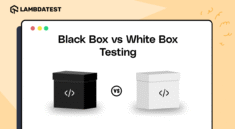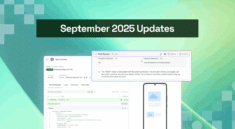The agent to agent (A2A) protocol is an open standard protocol, which is designed to enable safe communication and collaboration between AI agents on various platforms.
Launched by Google in April 2025 has attracted the attention of all AI and Engineers fans around the world because of its ability to integrate AI systems that are different from smooth.
This is like a universal language for artificial intelligence assistants, allowing them to share knowledge, coordinate with tasks and improve user experience.
A2A Protocol promotes a collaborative environment between various AI systems, to increase creativity and efficiency in developing AI Gen AD solutions.
As a result, the A2A protocol is regulated to change the AI development landscape, encouraging more interconnected and dynamic ecosystems.
What is the A2A protocol?
The A2A protocol is a HTTP -based communication model that allows services that can be operated between agents, facilitating smooth collaboration and data exchange.
This provides a standard framework for agent interactions, ensuring consistent communication and scalability in multi-agent systems.
Each agent shows the “Agent Card” -Deskriptor JSON that can be read the machine that detailed the identity, ability, end point, and authentication requirements.
The agent uses this information which is exposed in an agent card to find the ability of other agents and exchange messages to negotiate tasks.
A2A uses JSON-RPC for the exchange of messages, providing an independent way for calling procedures for long distance procedures with JSON. This makes A2A simple when managing complex agent interactions.
The protocol uses HTTP as its main transportation layer, which is built based on standard web communication. This makes A2A easy to integrate with existing systems and development tools.
This also includes SSE (Server-Sent Events) that allow long distance agents to flow updates to clients during work.
A2A architecture and components
- Agent card: Json files that describe the ability of agents, skills, endpoint urls, and authentication requirements used by clients for discovery.
- A2A server: Agents who expose the end point of HTTP that implement the A2A protocol. It accepts a request from the client and performs the task
- A2A client: Applications or agents that require access to other agents’ services. This sends a request to the A2A server URL.
- Task: The task is initiated by the client by sending messages to the server. They have unique IDs and progress through the state.
- Message: Representing the change of communication between clients and agents.
- Part: The basic content unit found in A
Message. This can be in the form of text, file parts, or data parts. - Artifacts: Represent the output produced by the agent when carrying out the task.
- Flow: For tasks that have been running for a long time, the server that supports events (SSE) sends an update event that provides real time updates about progress.
- Push notification: A2A Protocol allows the server to send proactive task updates to certain webook urls provided by the client.
How does A2A work?
A2A basic architecture is centered on two agents who work together. The client’s agent makes and sends assignments to the right long distance agents. Long distance agents process their duties and restore information or take action.
Agents work alone and do not share memory or tools by default. They share information through structured messages.
First, the client agent found tasks that require external support, now will make the ability to find the ability by finding agents to carry out operations based on their agent cards.
Agent card is a JSON document that describes the ability of the agent, end point, type of message that is supported, and the method of authentication for clear and efficient communication.
After finding, the client’s agent makes and sends a request for a long -distance agent, which processes the request and restores the response Artifacts.
Cases of real world use
1) Travel agent using A2A
- A user asks for a bot: “Find the cheapest flights to Paris this Friday.”
- Travel agent delegation via A2A:
- Flight search to different airline booking agents.
- Price comparison with aggregator agents.
- Order to the selected airline API agent.
2) E-Commerce Shopping Assistant Using A2A
- A user asks for a bot: “Order the phone below, 25000 with the best camera and appearance “
- Shopping assistants use A2A to connect to various e-commerce site agents.
- Get a different list of mobile phones using different e-commerce site agents.
- Using a feature comparison agent to identify the best cameras and display phones.
- Ordering to the selected cellphone using an online shop booking agent.
3) Customer support bots using A2A
- User Bot Message Support: “Can I exchange this item? Also, is there a stock near me?”
- Support bot delegation through A2A:
- Exchange of policy exchanges to Bot Exchange.
- Check the inventory to the stock agent directly.
- Estimated delivery to logistics agents.
4) Smart Car Assistant
- The driver says: “Find the nearest cheapest filling station.”
- Assistant in the car using A2A to:
- Find a station with location agent.
- Compare tariffs through energy provider agents.
5) Event Planning Assistant Using A2A
- Users say: “Plan the product launch event for next Friday night.”
- AI assistant uses A2A to coordinate in various agents:
- Order Agent Place – Finding the event available nearby.
- Marketing Agent – Schedule Email invitations and social media posts.
- Videographer media agents and direct streaming settings.
- Catering Agent – Food vendor contact for menus and prices.
Conclusion
A2A allows AI agents from different platforms to work together through general protocols, simplify collaboration and increase interoperability.
This supports a complex task delegation by enable the agents to find, communicate, and coordinate actions using structured messages and agent cards.
In addition, this increases collaboration between agents, ensuring that tasks are executed efficiently and effectively.
Features such as server-cent events and webhook-based push notifications provide progress in real-time tasks, as a result, they increase responses and transparency.
With HTTP and JSON-RPC in essence, A2A is easily adopted and integrated into existing systems, making multi-agent collaboration can be measured and efficient.
A2A forms the future of AI by fostering connected ecosystems where various agents can share abilities, automate workflows, and improve user experience.
Start the development of learning your machine with webkul.
Game Center
Game News
Review Film
Rumus Matematika
Anime Batch
Berita Terkini
Berita Terkini
Berita Terkini
Berita Terkini
review anime

